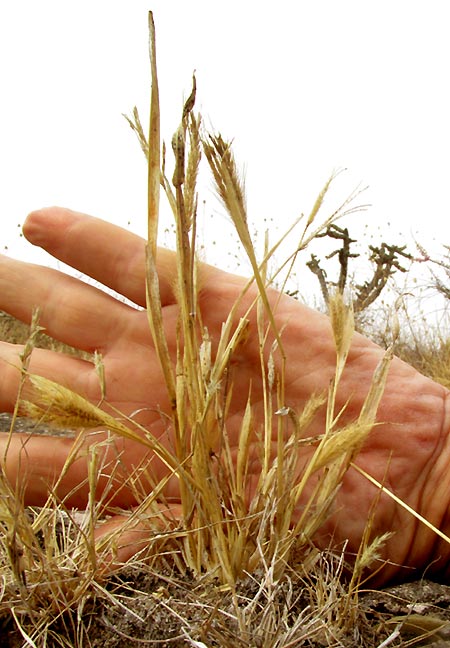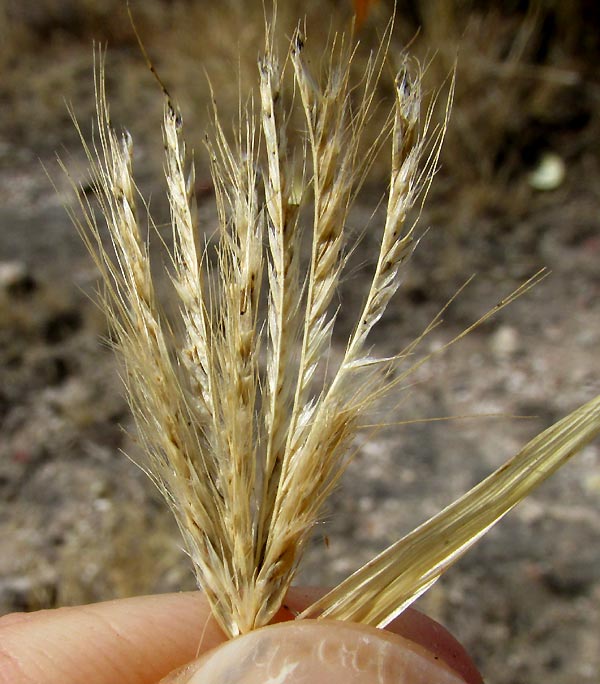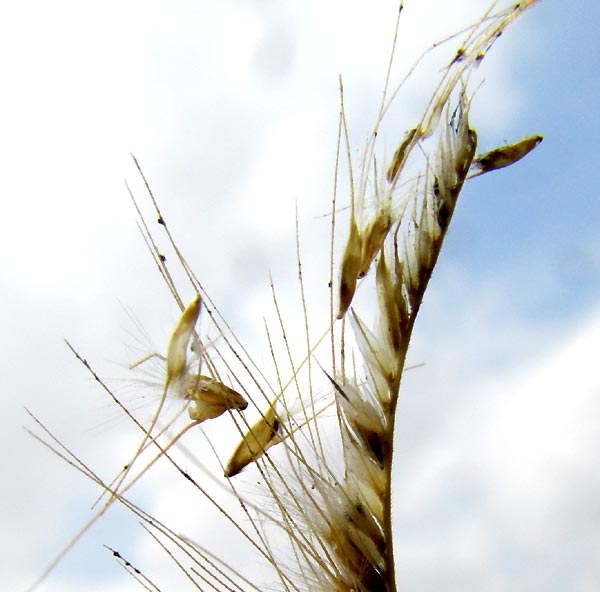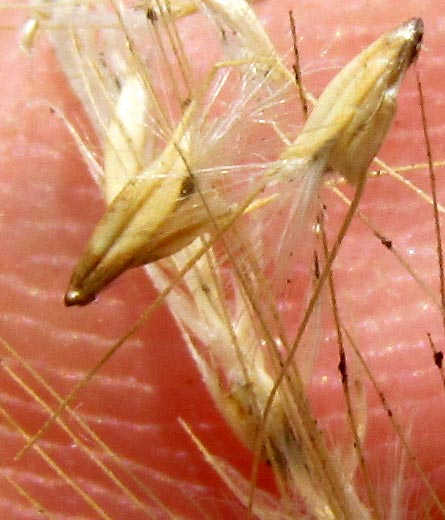Excerpts from Jim Conrad's
Naturalist Newsletter
entry dated April 8, 2022, issued from near Tequisquiapan, elevation about 1,900m (6200 ft), ~N20.57°, ~ W99.89°, Querétaro state, MÉXICO
RINGED DICHANTHIUM AT END OF SEASON

The above weather-battered, late-dry-season grass arose in a mostly unvegetated opening on a mostly grassy, scrubby slope. It was rooted in a hard-compacted, almost rocklike outcropping of a geologically consolidated mixture of volcanic ash and sediment from nearby hills composed mostly of the extrusive igneous rock rhyolite. Often plants able to occupy such exposed, dry, soil-poor substrates are highly adapted and of limited occurrence, so maybe this tattered little plant was something rare.
In the above picture, the flowering head seems composed of several fingers, or rames. A closer look at a head with its rames spread apart is shown below.

There's six of them and they all arise at nearly the same point atop the stem. With an estimated 1416 grass species documented for Mexico -- making Mexico, in terms of its size relative to its number of species -- the most grass-species-rich of all countries. (see J. Gabriel Sánchez-K's 2019 article "Riqueza de especies, clasificación y listado de las gramíneas (Poaceae) de México") This single feature considerably narrows down the possible species it could be. A closer look at a rame shows other distinctive features:

The spikelets' needle-like awns are good field marks, but the most important feature seen is that all the spikelets arise from just one side of the rame stem, or rachis. Spikelets of most species grow spirally around the rame, or are on their own slender stems, or pedicles, variously dispersed in a flowering head. Already we've narrowed down the possible IDs drastically. A closer look at the spikelets reveals more important features:

The big detail to note here is that the spikelets fall in pairs, not singly as with most spikelets disarticulating from their rachises. Also, the upper spikelet is elevated on a short stalk rising from the bottom of the first spikelet. At this point we've narrowed down the possible identities to a certain genus, that of Dichanthium, which incorporates about 20 species, all native to the subdeserts and marshlands of tropical Asia and Australia. So, instead of a species narrowly adapted to environments like our open space amid the grassy scrublands, we have an invasive, a weed.
The above-mentioned article by Sánchez-K reports that three Dichanthium species have invaded Mexico. On our plant, the shape of the lower glume of the "sessile" spikelet (the lower spikelet with no stalk), which is widest at its middle, not above the middle, and bearing no dense tuft of hairs near the tip, reveals that our species is the most commonly occurring in Mexico, DICHANTHIUM ANNULATUM, which the online Flora of North America graces with the English name Ringed Dichanthium. The "ring" is a tuft of hairs often but not always occurring at stem nodes. On our plant hair tufts are visible only at the lowest nodes.
Finally, here's what our little plant looked like in its challenging habitat:

The Malezas de México website describes this grass as found on almost all kinds of soil, plus it's tolerant of salinity and droughts, but can't deal with shade. With global warming and increased desertification in our future, this may be a species to keep in mind. In Asia the species is considered an important forage plant able to support heavy grazing and fire. Cultivars have been created to improve its forage potential.